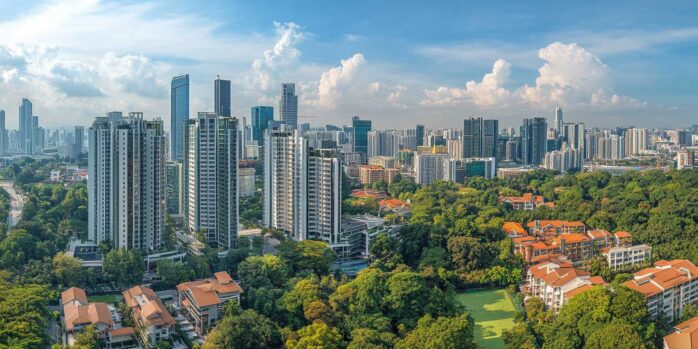Navigating the property market in Singapore involves understanding various financing limitations, one of which is the Mortgage Servicing Ratio (MSR). If you’re considering applying for a home loan, especially for HDB flats or Executive Condominiums, calculating your MSR correctly can be the difference between loan approval and rejection. This guide breaks down how MSR works, how to calculate it accurately, and what you can do to improve your financial readiness before applying.
Key Highlights
- MSR is a mandatory rule that caps the amount of your income used for mortgage repayment.
- It only applies to HDB flats and new Executive Condominiums purchased directly from developers.
- MSR is different from TDSR and shouldn’t be confused with it during loan planning.
- You can calculate your MSR using your gross monthly income and monthly loan repayments.
- Eligibility and loan limits are heavily influenced by CPF usage, loan tenure, and other monthly financial commitments.
- Proper MSR calculation helps you narrow down realistic property options like River Green and others.
What is MSR and why it matters

The Mortgage Servicing Ratio (MSR) is a key loan eligibility criterion enforced by the Monetary Authority of Singapore (MAS). Simply put, it limits how much of your gross monthly income can go toward servicing your home loan.
For HDB flats and new Executive Condominiums (ECs), the MSR is capped at 30%. That means, if your monthly gross income is $6,000, your home loan repayment must not exceed $1,800 per month.
MSR is strictly applied when you’re:
- Buying a new or resale HDB flat
- Purchasing a new EC directly from the developer
If you’re eyeing a private condo or resale EC, this rule won’t apply—but TDSR (Total Debt Servicing Ratio) will.
How to calculate MSR accurately
Here’s the simple formula:
MSR (%) = (Monthly Mortgage Payment ÷ Gross Monthly Income) × 100
Let’s break it down with an example.
Imagine you earn $7,000 monthly and you’re considering a 25-year home loan with a 4% interest rate for a $400,000 loan.
Using a mortgage calculator, your estimated monthly repayment would be around $2,111.
Then:
MSR = (2,111 ÷ 7,000) × 100 = 30.15%
Since that exceeds the 30% threshold, you won’t qualify unless you either increase your income or reduce the loan amount.
River Green ─ Aligning Affordability with Lifestyle
If you’re searching for a residence that balances modern amenities and affordability within MSR constraints, developments like River Green are worth exploring. The project offers thoughtfully designed layouts and connectivity perks that make it easier for buyers to manage their mortgage obligations while enjoying quality living. For individuals or couples with moderate incomes, River Green represents a viable option that fits within MSR limits, provided the loan is structured appropriately.
Consider calculating your MSR before viewing such properties—this way, you’ll avoid falling in love with a unit you legally can’t finance.
MSR vs. TDSR ─ Don’t confuse the two
Many buyers mistakenly use the Total Debt Servicing Ratio (TDSR) interchangeably with MSR. That’s a critical error.
- MSR only covers your housing loan obligations.
- TDSR includes all debt obligations—credit cards, car loans, personal loans, and your mortgage.
Let’s say you have a $1,200 car loan and a $600 personal loan per month. Those count toward your TDSR—but not your MSR.
You must pass both tests to qualify for your home loan.
Income types and how they affect MSR
Not all income is treated equally by banks and HDB. Understanding this can help you plan better:
| Income Type | Accepted For MSR | Amount Counted |
| Fixed salary (full-time job) | ✅ | 100% of income |
| Commission-based | ✅ | Averaged over last 12 months |
| Bonuses | ❌ | Not counted |
| Rental income | ✅ | 70% usually accepted |
| Freelance/Self-employed | ✅ | Must show 6–12 months proof |
So, if you’re self-employed or earning variable income, make sure your documents are solid—banks will need a clear income history before evaluating your MSR.
What Affects Your Monthly Mortgage Payment
Calculating MSR involves more than just your income—it’s also about understanding what shapes your monthly mortgage amount. These factors include:
- Loan tenure: Shorter terms mean higher monthly payments.
- Loan amount: Naturally, a bigger loan pushes your MSR up.
- Interest rate: Even a 1% change affects the monthly repayment significantly.
- CPF usage: Using CPF for monthly repayments helps reduce cash outflow but doesn’t lower your MSR ratio.
If your MSR crosses 30%, you’ll need to reduce either the loan amount or extend the tenure—though MAS has set a cap of 30 years for HDB loans and 25 years for bank loans.
Springleaf Residence ─ When MSR planning opens the door

Another example worth your consideration is Springleaf Residence. Located in a quieter district with a more affordable pricing profile, it becomes feasible for those who have calculated their MSR and know what monthly payment they can handle.
Many aspiring homeowners overlook these mid-range properties, yet they’re often the best fit for buyers with tighter MSR constraints but still desire new development perks.
Tips to improve MSR eligibility
If your current MSR doesn’t meet requirements, there are several strategies you can use:
- Clear short-term debts to improve your TDSR standing (which can indirectly help your bank approval).
- Increase your income or add a co-borrower (spouse, parent).
- Consider a smaller loan or a longer tenure to lower monthly payments.
- Use more CPF for the downpayment, reducing loan principal.
Common mistakes to avoid when calculating MSR
Even seasoned buyers make errors that can derail their financing plans. Keep an eye out for these:
- Using net income instead of gross: Always calculate MSR on your gross monthly income.
- Ignoring variable income treatment: Commissions or freelance income are not taken at 100%.
- Assuming CPF usage changes MSR: It helps with affordability but doesn’t affect MSR rules.
- Not factoring interest rate changes: What looks okay today may fail MSR at a higher rate.

Final thoughts ─ Know your MSR before house-hunting
Calculating your MSR before applying for a home loan in Singapore is not just a bureaucratic step—it’s a smart move to protect your financial future. You’ll avoid heartbreak, wasted time, and the stress of getting rejected after making an offer.
Before you even start shortlisting units like River Green or Springleaf Residence, plug your income and expected loan into an MSR calculator. Know your real budget. Then shop confidently, knowing you’re financially ready and fully compliant with MAS regulations.
A well-calculated MSR is your passport to homeownership—not a hurdle. Use it wisely.




